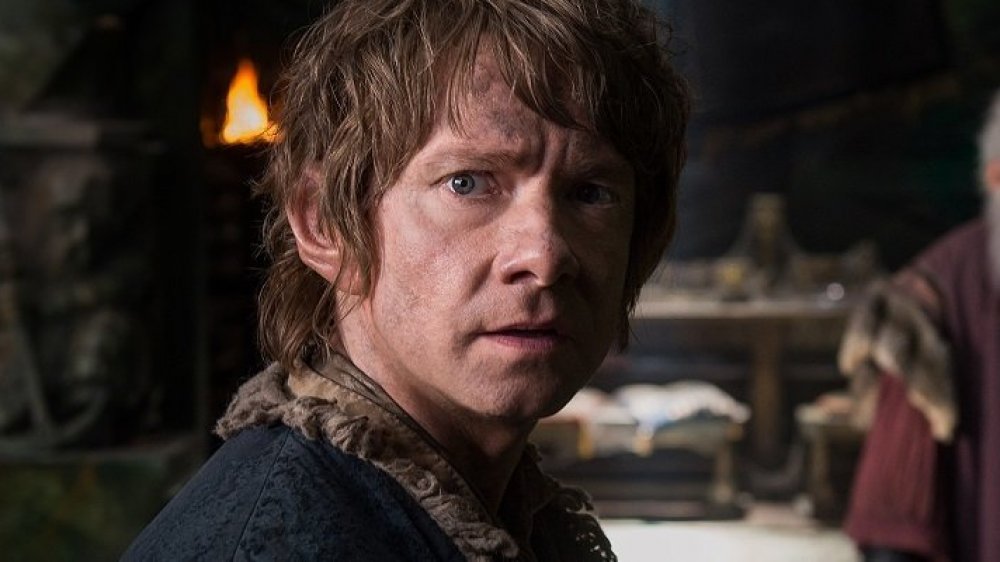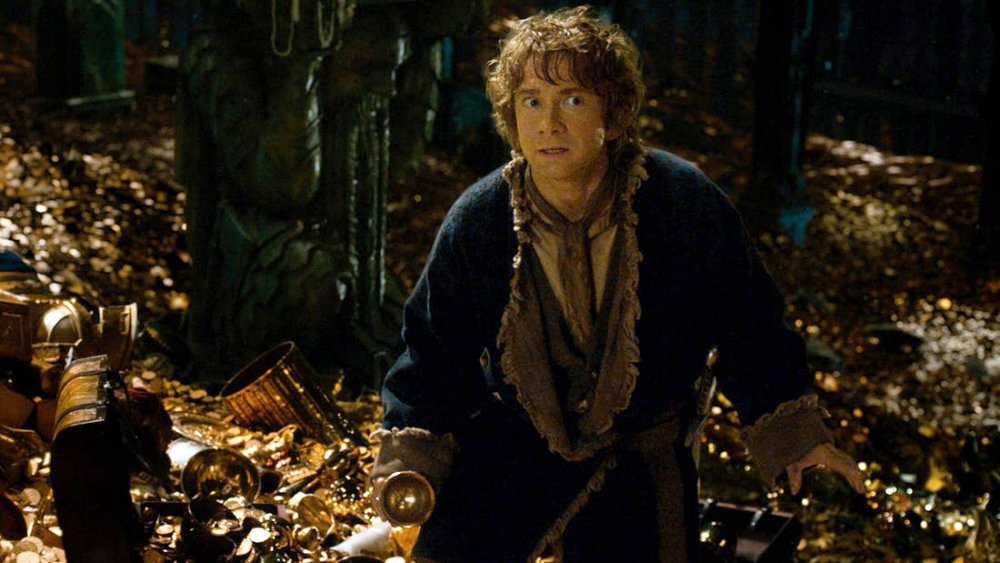The Surprising Reason Why Every Prop In The Hobbit Was Handmade - Exclusive
There are a number of reasons to enjoy the Hobbit film series: Martin Freeman's performance as the titular hobbit Bilbo Baggins, director Peter Jackson's flair for high fantasy, the narrative that's based upon J.R.R. Tolkien's 1937 novel of the same name, the action and the adventure, the heroes and the larger-than-life villains. Something that's always drawn audiences to the Hobbit movies — 2012's An Unexpected Journey, 2013's The Desolation of Smaug, and 2014's The Battle of the Five Armies — is the lush setting of Middle-earth, Tolkien's fictional world teeming with fantastical creatures and eye-catching landscapes. Filling Middle-earth and beyond in the Hobbit movies were thousands of props — all of which were handmade.
In an exclusive interview with Looper, set decorator and production designer Ra Vincent, who nabbed an Oscar nomination for his work on The Hobbit: An Unexpected Journey, revealed the surprising reason why each and every one of the films' props were made by hand.
Handmade Hobbit props
According to Vincent, there aren't any traditional prop houses in New Zealand, where Warner Bros. filmed the Hobbit movies. Prop houses are basically exactly what you'd think they'd be: places that rent out objects a film production might need. Say, for instance, a director was shooting a movie set in the 1950s, and needed a telephone and a television from that era to decorate a living room set. A prop house could supply the filmmaker with those exact items from the '50s, or ones that were created more recently to look like they're from that time, with no extra effort required.
In the case of the Hobbit films, the production team couldn't utilize traditional prop houses because there aren't any in the country. Thus, all the props for the Hobbit pics were planned out in advance and crafted by hand with a whole lot of love.
Vincent explained, "The Hobbit's an unusual one because in New Zealand we don't have prop houses, but we have a lot of artisan glass blowers and furniture makers and metal workers and jewelers, so everything that appeared in The Hobbit was fabricated."
What the films did have, however, were what Vincent described as "pretty extensive prop-making warehouses, with all the practitioners working with those objects." A prominent New Zealand company that crafts props and special effects for film and television is Weta Workshop — which helped create weapons, prosthetics, armor, and costumes, and more for all three Hobbit movies. The company is different from a traditional prop house, as everything it crafts aligns with a unique cinematic vision.
"The Hobbit's a little special in that all of the objects there were made specific to a specific design for that film," said Vincent. "You have to make sure that if there's a mug in the scene, that it's related to all the other wooden mugs in the house. That wooden mug in the hand of a character in the film has to be intimately detailed and planned ahead of time. You get everything correct with it, and also there's time to commission the work."
Today, there may be more traditional prop houses across New Zealand, but perhaps not the kind that the Hobbit movies' team intended to collaborate with. And in the end, the effort of hand-making props paid off: the Hobbit films earned a collective $2.9 billion worldwide and were mostly well-received by both audiences and critics.

